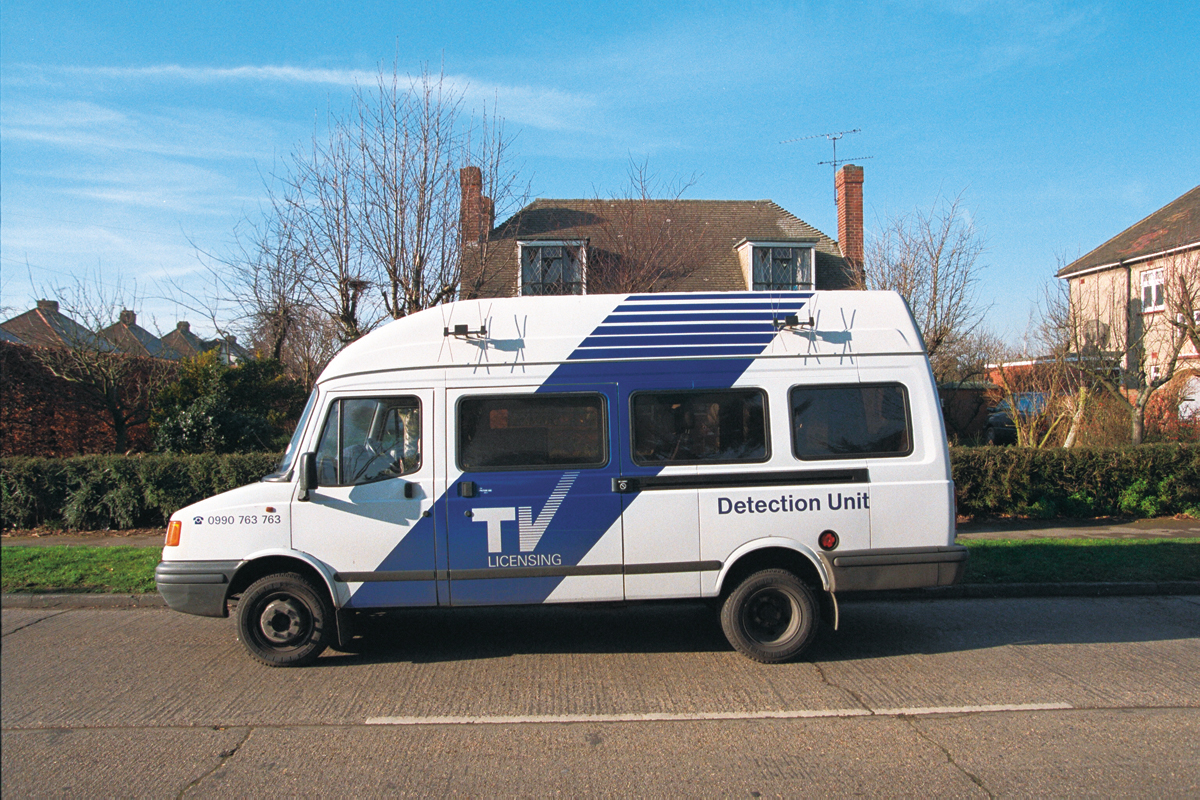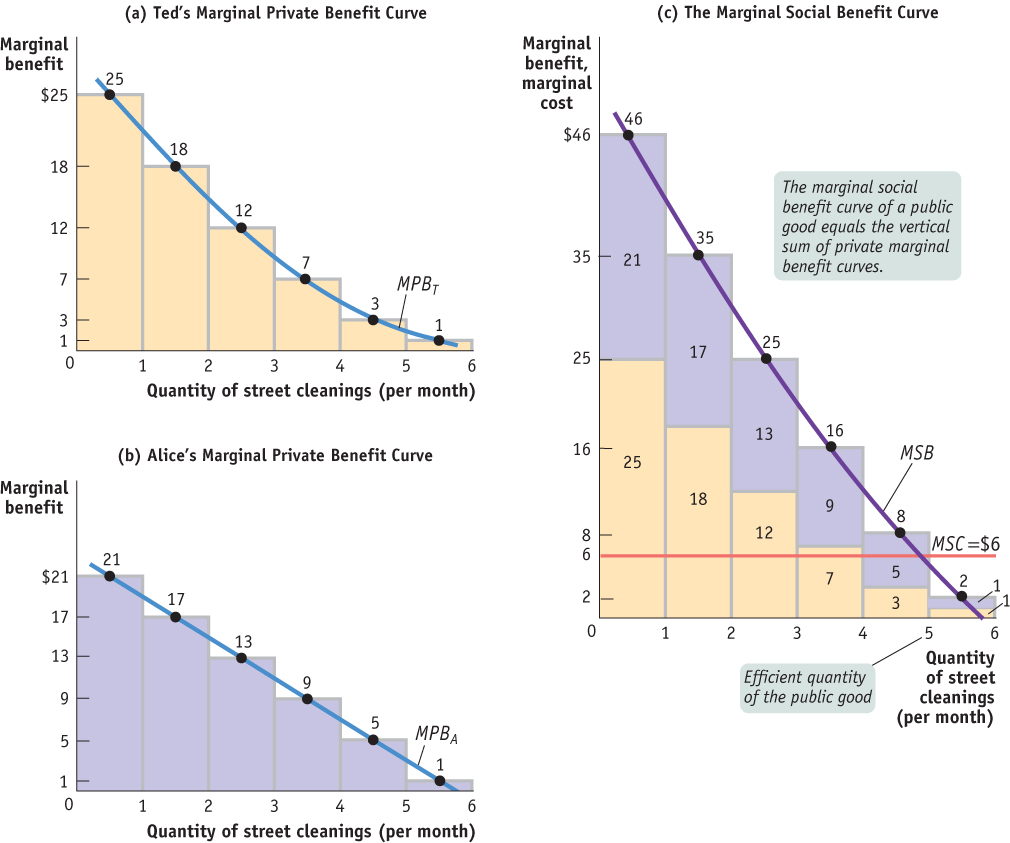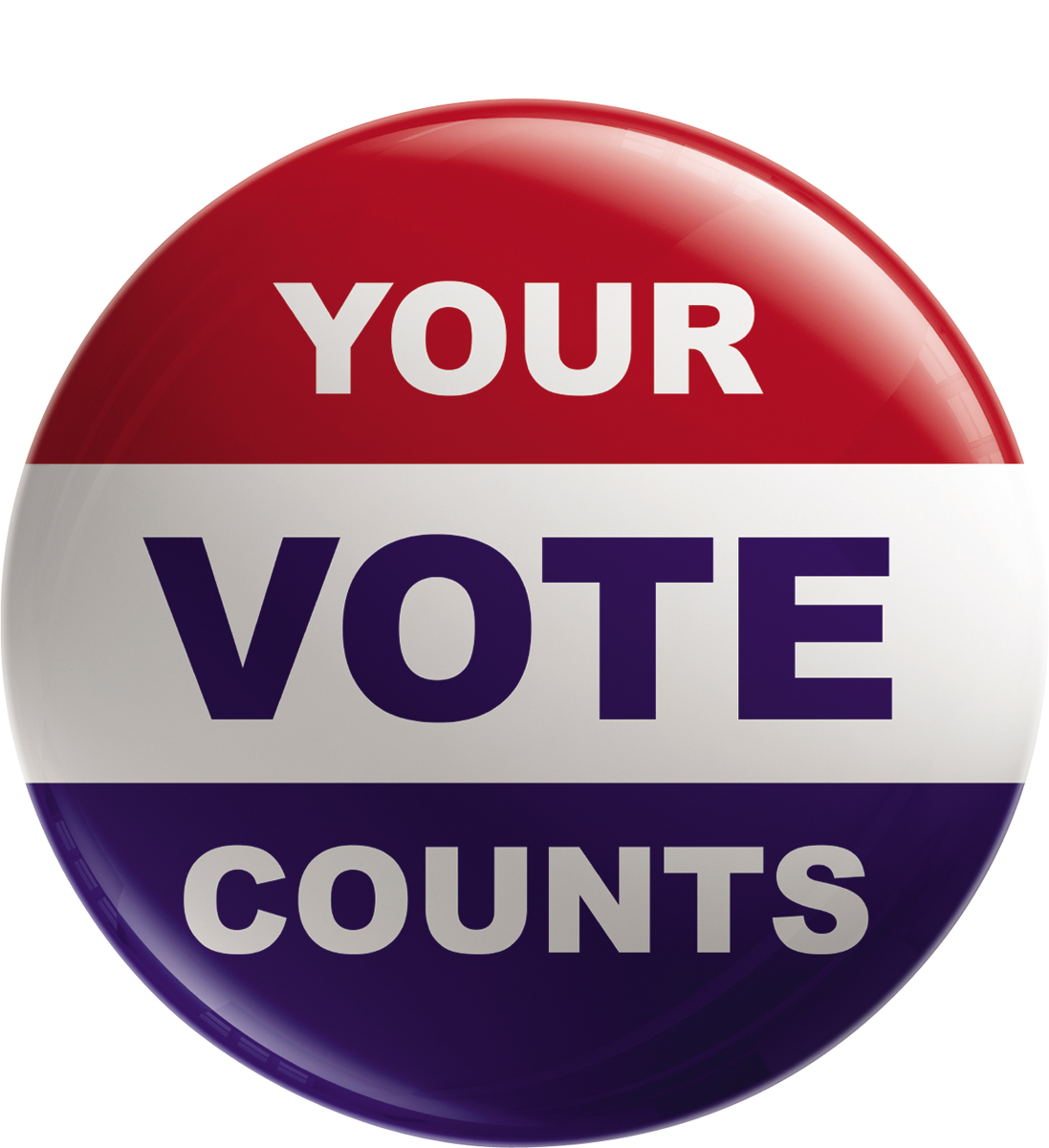Public Goods
A public good is both nonexcludable and nonrival in consumption.
A public good is the exact opposite of a private good: it is both nonexcludable and nonrival in consumption. A public sewage system is an example of a public good: you can’t keep a river clean without making it clean for everyone who lives near its banks, and my protection from sewage contamination does not prevent my neighbor from being protected as well.
Here are some other examples of public goods:
Disease prevention. When a disease is stamped out, no one can be excluded from the benefit, and one person’s health doesn’t prevent others from being healthy.
National defense. A strong military protects all citizens.
Scientific research. In many cases new findings provide widespread benefits that are not excludable or rival.
Because these goods are nonexcludable, they suffer from the free-
Providing Public Goods
Public goods are provided in a variety of ways. The government doesn’t always get involved—
Some public goods are supplied through voluntary contributions. For example, private donations help support public radio and a considerable amount of scientific research. But private donations are insufficient to finance large programs of great importance, such as the Centers for Disease Control and Prevention and national defense.
Some public goods are supplied by self-
Some potentially public goods are deliberately made excludable and therefore subject to charge, like pay-

In small communities, a high level of social encouragement or pressure can be brought to bear on people to contribute money or time to provide the efficient level of a public good. Volunteer fire departments, which depend both on the volunteered services of the firefighters themselves and on contributions from local residents, are a good example. But as communities grow larger and more anonymous, social pressure is increasingly difficult to apply, compelling larger towns and cities to tax residents and depend on salaried firefighters for fire protection services.
As this last example suggests, when other solutions fail, it is up to the government to provide public goods. Indeed, the most important public goods—
How Much of a Public Good Should Be Provided?
In some cases, the provision of a public good is an “either–
AP® Exam Tip
Like private goods, public goods should be produced until the marginal social cost is equal to the marginal social benefit. Remember that for a public good, the marginal social benefit of each unit is found by adding up the marginal private benefit received by each person who benefits from that unit.
Imagine a city with only two residents, Ted and Alice. Assume that the public good in question is street cleaning and that Ted and Alice truthfully tell the government how much they value a unit of the public good, one unit being one street cleaning per month. Specifically, each of them tells the government his or her willingness to pay for another unit of the public good supplied—
Using this information along with information on the cost of providing the good, the government can use marginal analysis to find the efficient level of providing the public good: the level at which the marginal social benefit of the public good is equal to the marginal social cost of producing it. Recall that the marginal social benefit of a good is the benefit that accrues to society as a whole from the consumption of one additional unit of the good.
But what is the marginal social benefit of another unit of a public good—
Why? Because a public good is nonrival in consumption—
Figure 76.2 illustrates the efficient provision of a public good, showing three marginal benefit curves. Panel (a) shows Ted’s marginal private benefit curve from street cleaning, MPBT: he would be willing to pay $25 for the city to clean its streets once a month, an additional $18 to have it done a second time, and so on. Panel (b) shows Alice’s marginal private benefit curve from street cleaning, MPBA. Panel (c) shows the marginal social benefit curve from street cleaning, MSB: it is the vertical sum of Ted’s and Alice’s marginal private benefit curves, MPBT and MPBA.
| Figure 76.2 | A Public Good |

To maximize society’s welfare, the government should increase the quantity of street cleanings until the marginal social benefit of an additional cleaning would fall below the marginal social cost. Suppose that the marginal social cost is $6 per cleaning. Then the city should clean its streets 5 times per month, because the marginal social benefit of each of the first 5 cleanings is more than $6, but going from 5 to 6 cleanings would yield a marginal social benefit of only $2, which is less than the marginal social cost.
One fundamental rationale for the existence of government is that it provides a way for citizens to tax themselves in order to provide public goods—
Of course, if society really consisted of only two individuals, they would probably manage to strike a deal to provide the good. But imagine a city with a million residents, each of whose marginal private benefit from a good is only a tiny fraction of the marginal social benefit. It would be impossible for people to reach a voluntary agreement to pay for the efficient level of a good like street cleaning—
Voting as a Public Good
Voting as a Public Good
It’s a sad fact that many Americans who are eligible to vote don’t bother to. As a result, their interests tend to be ignored by politicians. But what’s even sadder is that this self-
As the economist Mancur Olson pointed out in a famous book titled The Logic of Collective Action, voting is a public good, one that suffers from severe free-
Imagine that you are one of a million people who would stand to gain the equivalent of $100 each if some plan is passed in a statewide referendum—
Of course, many people do vote out of a sense of civic duty. But because political action is a public good, in general people devote too little effort to defending their own interests.
The result, Olson pointed out, is that when a large group of people share a common political interest, they are likely to exert too little effort promoting their cause and so will be ignored. Conversely, small, well-
Is this a reason to distrust democracy? Winston Churchill said it best: “Democracy is the worst form of government, except for all the other forms that have been tried.”
